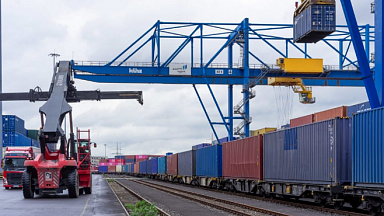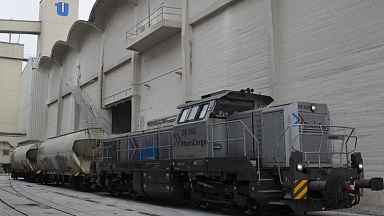In November, RUT (MIIT) held a special contest for the «Transportation BPM Project of the Year». The project by UTLC ERA, JSC to optimize container train routes within the 1,520-mm space in the «China-Europe-China» line received a nomination for «Best completed transport BPM project».
As the press service of RUT (MIIT) declared, the content’s purpose was to stimulate the development and utilization of advanced process management methods and technologies in the transportation business. Over 26 companies from the transportation and logistics industry participated in the contest.
«All initiatives introduced in the contest showcased modern approaches to monitoring KPI processes, and digital transformation in the industry,» the university statement says.
Technology
According to the competition organizer, the jury highly regarded the UTLC ERA’s project utilizing optimal schemes of consolidating container trains in the 1520-mm space in the China-Europe-China line for its content depth and the «tangibility of the result achieved over the course of the project work».
As Alexander Besedin, vice president for transportation of UTLC ERA’s Transportation Directorate, told 1,520 International, the basis of the technology is the sequential formation of the container trains using maximum loading of large-tonnage containers in 1,520-mm gauge cars, excluding the free container spaces in the cars.
Thus, containers from China arriving in Kazakhstan on two 1,435-mm gauge trains are consolidated into a single full container train with a 1,520-mm gauge using a «2 in 1» scheme. Likewise, trains originating in the PRC on a 1,435-mm track gauge are combined into two full container trains with a 1,520-mm gauge using a «3 in 2» scheme.
Alexander Besedin explained that all container train operations on the China-Europe-China route are managed at Altynkol Kazakhstan Railways (KTZE) checkpoints through the approach lines of «Dry Port KTZE — Khorgos Gateway» multimodal logistics complex, as well as at interstate reception joints on Dostyk (KTZE) and Brest (Belarusian Railways (BZhD) station tracks. «In some cases, container trains ranging from 82 to 114 conventional cars in length may be assembled and allowed to pass, provided that it is agreed upon by the national carriers KTZh, „RZhD“, JSC, and BZhD,» he specified.
Enhancing service quality
The technology was utilized for the first time during container transhipment in Kazakhstan in 2017, UTLC ERA noted. Since then, 70% of the transportation volume of large-capacity containers shipped accounted for «3 in 2» and «2 in 1» schemes.
For 5 years and for 9 months this year, container trains were combined and transported in «2 in 1» scheme for a total of 769 trains or 128.1 thousand TEU. Under the «3 in 2» scheme, 8,558 trains or 1,228 thousand TEU were transported.
«As for directions, 271 trains were combined from Europe to China with 9,056 trains that traveled from China to Europe,» Alexander Besedin emphasized.
He believes that using XL-Train technology benefits everyone involved in the transportation process.
As a result, by relieving congestion on train routes, carriers can optimize train schedules and make more efficient use of railway sections’ throughput. This ultimately reduces operating costs, especially for traction and locomotive crews. Furthermore, this technology also allows container train organizers to reduce the number of train cars needed and to maintain a balanced approach to meeting transportation volume needs.
«Furthermore, the technology provides a basis to enhance the quality of services provided in the 1,520-mm gauge space, as well as attract additional volumes of transportation in the China-Europe-China line, thus relieving the load on the railroad infrastructure,» he summarized.



